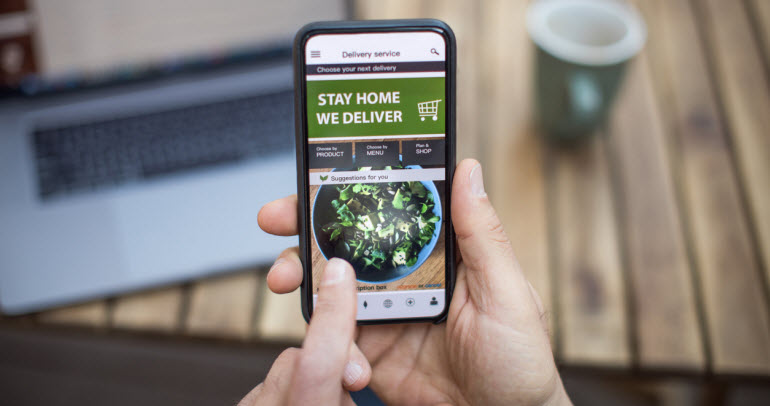
How many of your brand’s big moves have been made off-the-cuff?
If you manage any of the world’s most successful and admired brands, the answer is likely the same: not many, if any. In fact, many smaller, less consequential decisions are often accompanied by thoughtful, purposeful processes to support, justify and prove the value each move will bring to the overall business.
Today, during the COVID-19 world pandemic crisis, we’re witnessing countless brands and organizations making quick-turn maneuvers to remain relevant, help their customers and ensure continuity of business. Brands have worked years, often decades or longer, building and nurturing relationships with their customers. So it’s natural for brands to feel a mutual connection with their customers and want to find a way through troubled times together.
Your Brand Will Be (Re)Made Now, a recent Escalent blog by Lindsey Dickman, highlights how brands are being reshaped whether they take action or not, raising great points about why it’s important to control your own destiny by taking action now. But it’s not enough just to do something—in fact, it’s all too easy to damage your brand by taking the wrong action during a crisis. Motivated by the desire to “do something now,” many are performing without the usual safety net—ditching the tried-and-true processes that help make the difference between sticking the landing or falling from grace. Speed is important, but years of research and countless case studies have taught us that what you do must be thoughtful, sincere and authentic to avoid appearing opportunistic.
Here are some great examples of companies doing what they can to help.
Disney is a great example of a brand with such strong loyalty and brand love that they likely don’t need to do anything, yet they did. To help make time at home with children a bit more bearable and fun for everyone, Disney released two titles on Disney+, their streaming subscription service, far ahead of schedule: Frozen 2 and Onward.
Amazon, Whole Foods and Target have increased wages and benefits to employees working the front lines and providing us access to the food and necessities we need. Other companies like Cisco and Apple have taken a step out of their usual tech-focused business lane to contribute directly to the medical cause, with big donations to support COVID-19 relief.
But, recent history also has plenty of examples of brands stepping on their own toes.
Recently, a fashion brand fell victim to numerous missteps, starting with an email commiserating over the difficulties the world is facing—paired with a promotion on denim. Matters became more complicated when the fashion brand’s “100% human” brand ethos and “in this together” messaging coincided with layoffs in their customer experience group.
A colleague of ours was puzzled to find a note from a gas price monitoring company. It informed him that the CMO was working from home and that the company has renewed commitment to their core mission of providing accurate gas prices. While well-intentioned, the email just felt like clickbait, using the pandemic to get attention without bringing real value or new information to the customer.
Big decisions require big considerations.
Before the pandemic, a brand would have been ill-advised to make a big decision without carefully vetting the impact it would have. The same holds true during and beyond the disruption caused by COVID-19. And it’s not just about good versus bad decisions. There’s an entire range of outcomes, and what’s good for one brand could spell disaster for another. It’s dangerous to spring blindly into action, even if competitors have already made moves. Just as we see limited medical resources being carefully rationed and distributed, brands, too, want to ensure their actions have the most positive impact.
Now more than ever, organizations need to evaluate the range of responses at their disposal to make the best decisions for their customers, their employees and for the betterment of the markets they serve. Luckily, this evaluation can be completed quickly. Rapid-deployment research, such as quick quantitative pulse checks, mobile surveys and discussions, existed long before COVID-19.
Key guidelines or gut checks brand marketers need to keep at the forefront of their minds include:
- Be efficient. Which levers can I pull to make the most positive impact?
- Be purposeful. Which actions will result in short- or long-term lift?
- Be real. How can my brand show its genuinely good intentions and not come across as pandering?
- Be what you are. How can my brand remain consistent and true to its established identity?
- Be where you should be. What is appropriate for my brand to get involved in or speak out about?
It is also crucial to work to avoid a few potential pitfalls during this time:
- Don’t be afraid to act. Follow your gut (and these guidelines) to take quick action even in uncertain times.
- Don’t force it. Do what feels natural and authentic to your brand and your position in the market.
- Don’t lose sight of your North star. Stay true to your brand and overall mission.
- Don’t forget to be human. Remember that we’re all people. In times of crisis and uncertainty, people are what truly matter most.
Brands that can keep pace with evolving customer needs and expectations, especially during times of crisis, can do so by following these guidelines and relying on scientific measures to land precisely where customers want and need them to be.
Are you trying to figure out which way to go next? Our experts are in the center of the storm and well connected with what is going on across multiple industries—Send us a note.









